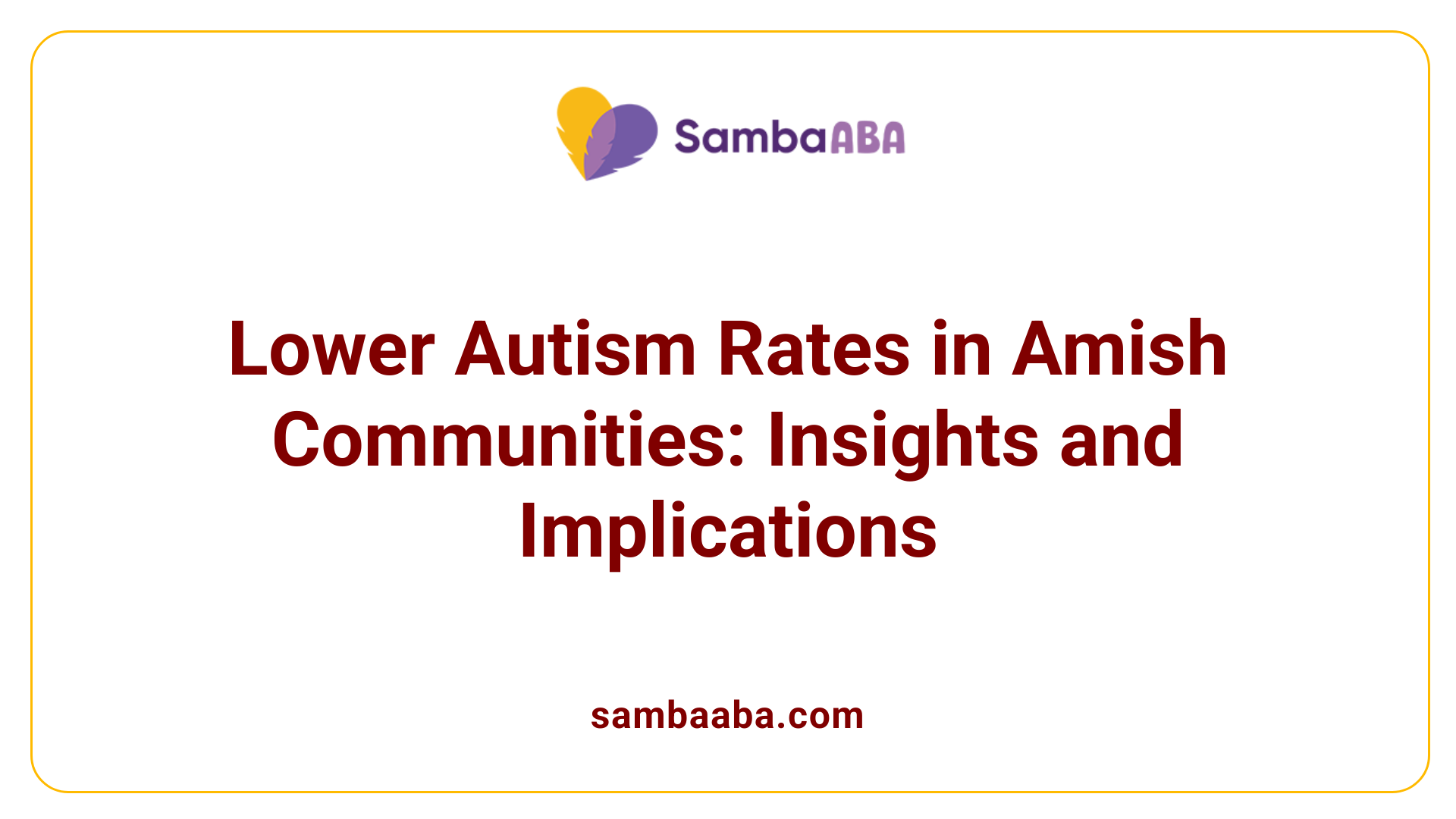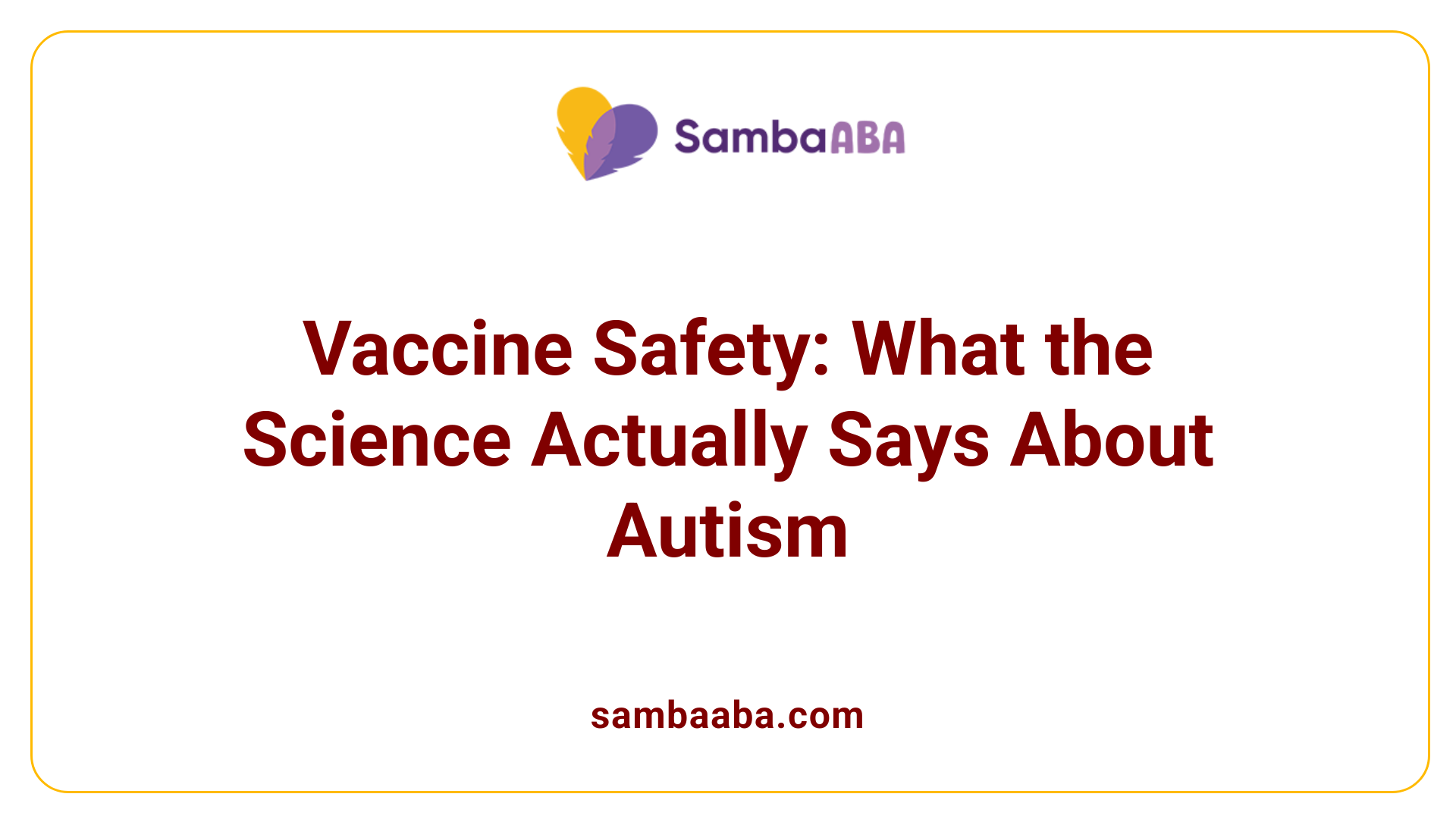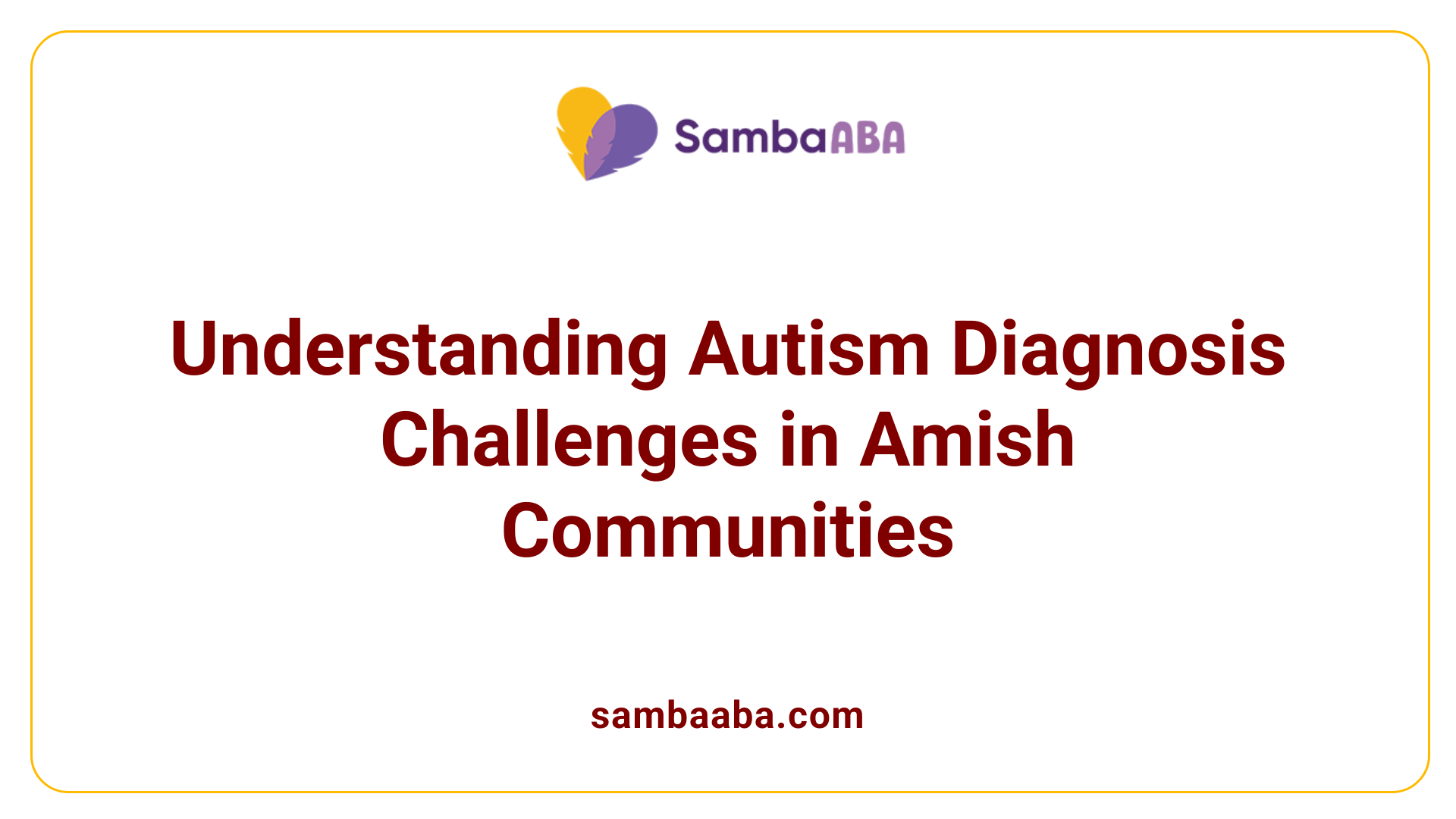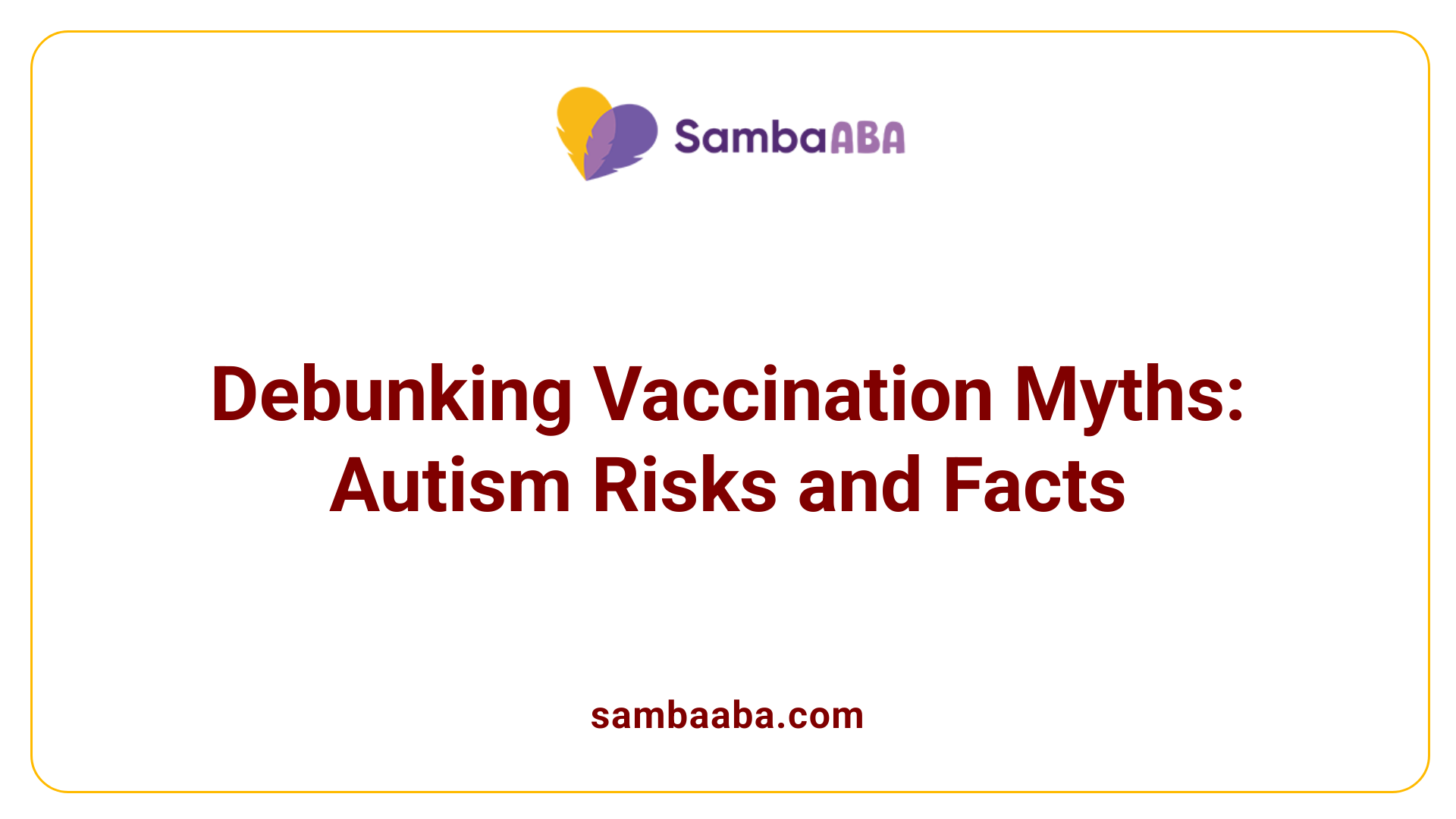Do Amish Kids Get Autism?
Unraveling Autism in the Amish Community: Prevalence, Myths, and Research Insights
Examining Autism in Isolated Populations
The question of whether Amish children have autism and how prevalent it is within their community has garnered curiosity and concern alike. This article explores the current scientific understanding, community data, and misconceptions about autism spectrum disorder (ASD) among Amish children, providing a nuanced look into what recent studies reveal about this unique population.
Prevalence of Autism in Amish Communities

What is the prevalence of autism spectrum disorder among children in isolated or specific populations?
Research indicates that autism spectrum disorder (ASD) prevalence among children in isolated communities varies, with estimates generally lower than in the broader population. A recent systematic screening of Amish children in Ohio and Indiana provides some insight. Out of 1,899 children aged 3 to 21, 25 screened positive for ASD, and seven were confirmed through clinical evaluation. This results in an approximate prevalence of 1 in 271 children, which is significantly lower than the national average of 1 in 166 in the United States.
These findings suggest that autism may be less common among Amish children, possibly due to genetic factors, environmental influences, or cultural differences that affect diagnosis and reporting. Many Amish communities reportedly have high vaccination rates despite common assumptions; however, some Amish children do not receive immunizations, which has been speculated by some as an environmental factor, although no scientific evidence links it to autism. Some healthcare professionals treating Amish children with autism have not observed cases among the Amish, further indicating a lower prevalence.
Methodology of recent studies examining autism in Amish populations
The recent studies used comprehensive, systematic screening tools to identify autism among children, such as the Social Communication Questionnaire (SCQ), the DSM-IV-TR Checklist, Autism Diagnostic Observational Schedule (ADOS), and Autism Diagnostic Interview (ADI). The screening involved children aged 3 to 21, providing a broad age range to capture potential diagnoses.
Initial screenings flagged children with possible ASD, followed by detailed clinical assessments to confirm diagnoses. The meticulous approach aimed to ensure accuracy and reduce false positives. Despite these rigorous methods, the number of confirmed cases remains very small relative to the total screened population.
Comparison with general population rates
In comparison to the general U.S. population, where about 1 in 166 children are diagnosed with autism, Amish children seem to have a considerably lower prevalence—possibly as low as 1 in 15,000 in some communities. This stark difference may stem from various factors, including genetic diversity, environmental exposures, or differences in diagnostic recognition.
While some reports suggest that the actual autism rate among Amish children might be underestimated due to cultural or reporting differences, the overall data consistently points toward a lower observed prevalence. Ongoing research continues to explore these disparities, aiming to clarify the roles of genetics, environment, and healthcare practices.
| Population | Estimated Autism Prevalence | Methodology | Key Notes |
|---|---|---|---|
| Amish children (Ohio & Indiana) | ~1 in 271 | Systematic screening + clinical assessment | Lower than national average, possible underreporting |
| General U.S. children | 1 in 166 | Epidemiological surveys | Widely accepted, with increasing awareness |
| Broader populations (Asia, Australia) | 0.4% - 1.7% | Regional studies | Variations driven by diagnostic practices |
Understanding autism in isolated populations like the Amish can shed light on genetic and environmental influences. Although the prevalence appears lower, more comprehensive research is necessary to fully understand these patterns.
Genetic and Environmental Factors in Autism among the Amish
Are there genetic, environmental, or socioeconomic factors that influence autism rates?
Yes, research indicates that multiple factors contribute to the occurrence of autism, including genetic, environmental, and socioeconomic components.
Genetic contributions are substantial, with heritability estimates around 80%. Certain genetic syndromes, such as fragile X syndrome, are linked to increased autism risk. Studies suggest that genetic predispositions can significantly influence whether a child develops autism.
Environmental influences also play a role. Prenatal exposures to factors like maternal illness, infections during pregnancy, the use of medications, and complications during childbirth can impact fetal brain development. Exposure to pollutants such as air pollution, pesticides, and heavy metals may further affect neurodevelopment through epigenetic mechanisms, which alter gene expression without changing DNA sequences.
Socioeconomic status might affect access to timely diagnosis and early intervention services. Lower socioeconomic levels can sometimes correlate with higher stress levels and environmental exposures that may influence autism prevalence, although the evidence remains mixed. Overall, the development of autism is believed to involve a complex interaction among genetic predispositions, environmental exposures, and socioeconomic factors.
What is the autism prevalence among Amish children?
Preliminary studies estimate that autism affects Amish children at a rate significantly lower than the general population, with estimates ranging from 1 in 271 to as low as 1 in 15,000 in some communities. For comparison, the broader U.S. population sees rates around 1 in 166.
Research involving screenings of Amish children aged 3 to 21, using tools such as the Social Communication Questionnaire (SCQ), Autism Diagnostic Observational Schedule (ADOS), and Autism Diagnostic Interview (ADI), found that out of 1899 children, only 25 screened positive for ASD, and just 7 were confirmed following clinical evaluations.
Most Amish communities reportedly have high vaccination rates, contradicting the myth that lack of vaccination explains lower autism rates. In fact, some Amish children diagnosed with autism have never been vaccinated, prompting investigations into environmental factors other than immunizations—such as potential exposure to environmental toxins like mercury.
Cultural and Reporting Factors Influencing Autism Diagnosis
Some experts suggest that cultural factors within Amish communities, including perception and acceptance of developmental differences, may influence reporting and diagnosis rates. The lower observed rates could partly result from underdiagnosis or differences in access to specialized healthcare services.
However, no direct evidence links the lower prevalence with vaccination status. The original studies that pointed to a vaccine-autism connection have been retracted due to ethical issues. Current research emphasizes that autism exists across all groups, with distinct prevalence rates influenced by a complex mixture of genetic, environmental, and cultural factors instead of vaccination practices.
| Aspect | Notable Findings | Additional Notes |
|---|---|---|
| Autism prevalence | Much lower in Amish (as low as 1 in 15,000) | Compared to 1 in 166 in the U.S. |
| Vaccination status | Most Amish children vaccinated or not? | High vaccination rates; some diagnosed with autism are unvaccinated |
| Environmental factors | Possible influence of toxins | Exposure to mercury and other pollutants suspected |
| Cultural impact | Underdiagnosis or reporting bias | Cultural attitudes may affect detection and reporting |
In summary, autism rates among Amish children highlight the importance of considering genetic, environmental, and cultural influences beyond vaccination status, underlining the multifaceted nature of this neurodevelopmental condition.
Impacts of Vaccination and Community Beliefs

Is there scientific evidence linking vaccines to autism?
Extensive scientific research has shown no credible connection between vaccines and autism spectrum disorder (ASD). Numerous large-scale studies have consistently demonstrated that vaccines, including the MMR vaccine and those containing thimerosal, do not cause autism. The original study published in 1998 that claimed a link was later retracted due to ethical violations and scientific misconduct.
Current understanding emphasizes genetic factors and early developmental issues as the main contributors to autism. Symptoms are often observable before children receive vaccines, indicating that vaccination does not influence the onset of autism. Despite this robust evidence, the myth linking vaccines to autism persists, fueled by misinformation, coincidences in timing, and the complexity of studying low-incidence disorders.
What does research say about vaccination status among Amish children with autism?
Research into Amish communities reveals that most Amish children do receive some vaccines; about 14 percent of Amish parents refuse vaccinations due to religious beliefs. Interestingly, several cases of autism have been reported among unvaccinated Amish children. However, the presence of autism within these communities does not implicate vaccination as a cause.
Studies show that autism exists regardless of immunization status in Amish children. Some healthcare providers suggest environmental factors, such as mercury exposure, might influence autism risk in certain cases, but these hypotheses are not supported by broad scientific consensus.
Overall, available data supports that autism occurs across different communities and vaccination statuses. The lower observed rates of autism in Amish children—estimated at about one-third of the national rate—are likely influenced by underreporting or differences in diagnosis practices rather than vaccination status.
| Aspect | Findings | Additional Details |
|---|---|---|
| Autism rate in Amish children | Lower than general population (about 1 in 271 vs. 1 in 166) | Estimated prevalence; reporting differences may influence estimates |
| Vaccination history | Most Amish children have received some vaccines; some refuse | Approximately 14% refuse vaccinations, mostly for religious reasons |
| Autism among unvaccinated | Present, but with no proven links to vaccination | Environmental factors like mercury are hypothesized but unconfirmed |
| Scientific consensus | No evidence linking vaccines to autism | The original vaccine-autism study was retracted |
Further Information
Research continues exploring environmental and genetic factors contributing to autism. Current data robustly dismiss vaccines as a cause, supporting vaccination safety. Myths about vaccine-induced autism remain based on outdated or discredited research, and understanding community beliefs helps combat misinformation.
Cultural Aspects and Diagnostic Challenges in Amish Communities

What are the characteristics and diagnostic criteria for autism spectrum disorder?
Autism spectrum disorder (ASD) is primarily characterized by persistent difficulties in social communication and interaction. This may include challenges with making eye contact, interpreting social cues, sharing interests, and forming relationships, often observable from early childhood.
Core features include repetitive behaviors and restricted interests, such as stereotyped movements, insistence on routines, and sensory sensitivities. Diagnosis is based on behavioral signs outlined in the DSM-5, requiring these symptoms to be present in multiple settings, cause significant impairment, and not be attributable to other conditions like intellectual disability.
Symptoms tend to emerge early but can sometimes be masked or become more apparent as social demands grow. Since there are no biological tests for ASD, clinicians rely on behavioral assessments and standardized evaluation tools, like the Autism Diagnostic Observation Schedule (ADOS), for diagnosis.
Cultural attitudes towards health and disability
In Amish communities, cultural attitudes significantly influence how health issues, including developmental disabilities like autism, are perceived and managed. Many Amish families view health challenges through a religious or spiritual lens, sometimes seeing physical and mental health conditions as part of divine will or testing.
Stigma associated with disability can lead to underreporting or reluctance to seek formal diagnosis. Additionally, some Amish communities prioritize traditional healing and may distrust modern medical practices, which affects the detection and intervention of autism.
Diagnosis practices and access to medical care
Access to diagnostic services and healthcare providers varies among Amish populations. Many Amish children do not routinely access specialized healthcare, partly due to geographic isolation and ideological reasons that advocate for minimal engagement with modern medicine.
However, some Amish children do receive assessments, especially as awareness of autism grows. Studies have shown that although vaccinations and conventional healthcare are often declined, some Amish families seek medical advice for developmental concerns.
Screening in these communities often involves adapted tools and approaches sensitive to cultural differences. Nonetheless, access to early intervention programs remains limited, which can delay autism diagnosis.
Potential underdiagnosis or misdiagnosis
Given cultural attitudes and healthcare access barriers, autism may be underdiagnosed among Amish children. This underdiagnosis might result from several factors:
- Lower levels of awareness or recognition of autism symptoms.
- Cultural stigma that discourages seeking help.
- Preference for non-medical explanations.
- Limited availability of specialized diagnostic tools and trained professionals.
Furthermore, some behaviors associated with autism could be mistaken for typical Amish cultural behaviors or developmental norms, leading to misdiagnosis or oversight.
Diagnostic data insights
Research indicates that autism prevalence in Amish communities appears much lower than in the general U.S. population—estimated at around 1 in 271 children vs. approximately 1 in 166 children nationally. A systematic screening of Amish children aged 3-21 identified only a handful of confirmed cases out of nearly 1900 participants.
This discrepancy may partly reflect true lower prevalence but could also be attributed to reporting and diagnostic challenges. For example, one clinician reported never seeing autism among Amish children in Ohio, with rare cases of uncertain cause.
| Aspect | Observations | Impact on Diagnosis |
|---|---|---|
| Cultural attitudes | Often view disabilities as spiritual, stigmatized, or misunderstood | Hinders acknowledgment and seeking medical evaluation |
| Healthcare access | Limited due to geographic and cultural factors | Delays or prevents diagnosis and intervention |
| Diagnostic awareness | Generally low, with potential for misinterpretation of behaviors | Underdiagnosis or misdiagnosis |
| Autism prevalence estimates | Much lower than general population estimates | Likely influenced by underreporting and testing limitations |
Understanding these factors is vital to improving autism awareness and assessment strategies within Amish communities.
Myths, Misconceptions, and Scientific Clarifications

Do Amish kids get autism, and is it linked to vaccination?
Amish children do have autism, but the rates are notably lower than those in the broader population. Some might assume that because the Amish community often has lower vaccination rates, they are protected from autism, but this is a misconception.
Research shows that autism exists within Amish communities, with estimated prevalence around 1 in 271 children, compared to the U.S. national rate of about 1 in 166. However, some Amish children diagnosed with autism are unvaccinated, yet studies find no evidence linking vaccination status to autism development.
Most Amish parents do vaccinate their children, with approximately 86% opting for some vaccines, despite religious exemptions. Scientific consensus remains firm: vaccines do not cause autism. Repeated large-scale studies and reviews have found no causal relationship between vaccination and autism.
The lower autism diagnosis rates observed among the Amish are likely influenced by cultural factors, differences in reporting, or genetic factors, rather than vaccination practices. A 2019 study and reports from health authorities reinforce that the myth linking vaccines to autism is unfounded.
In sum, autism does occur in Amish children, but vaccination is not a contributing factor. Relying on scientific evidence helps clarify these misconceptions and emphasizes that vaccines are safe and do not cause autism.
Understanding Autism in the Amish Context
While autism exists among Amish children, its prevalence appears to be lower compared to the general population. Scientific research, encompassing epidemiological studies and genetic analyses, supports the conclusion that vaccines do not cause autism. Factors such as genetics, environmental exposures, and cultural perceptions influence diagnosis and reporting within the community. Continued, respectful research is essential to accurately understand the autism spectrum in isolated populations like the Amish, dispelling myths and fostering awareness.
References
- Explaining Low Rates of Autism Among Hispanic Schoolchildren in ...
- False Claim About Cause of Autism Highlighted on Pennsylvania ...
- Prevalence Rates of Autism Spectrum Disorders Among the Old ...
- [no title] — Beyond Pesticides
- Anti-vaccine myth that Amish children don't have autism resurfaces
- The Evidence on Vaccines and Autism | Johns Hopkins
- Vaccines and Autism | Children's Hospital of Philadelphia
- Autism and Vaccines - CDC
- Autism and Vaccines - Autism Science Foundation
